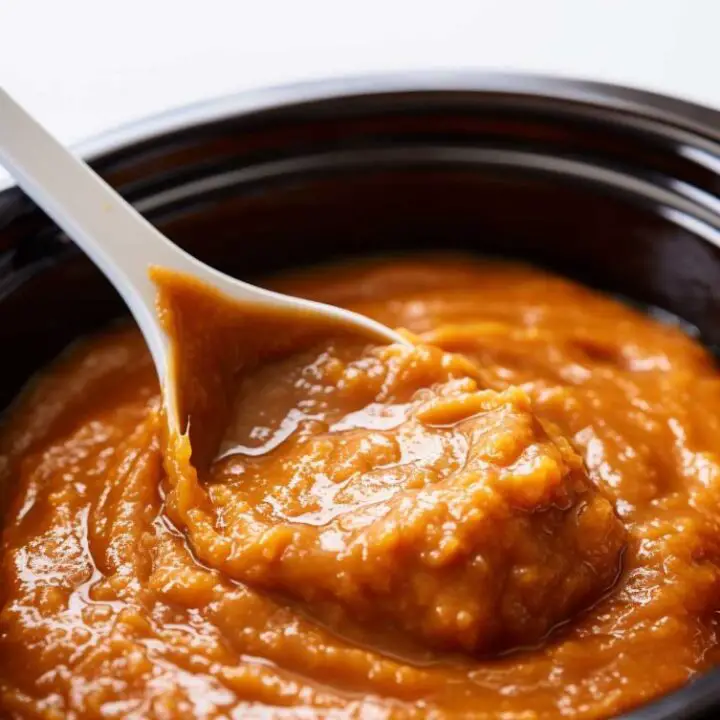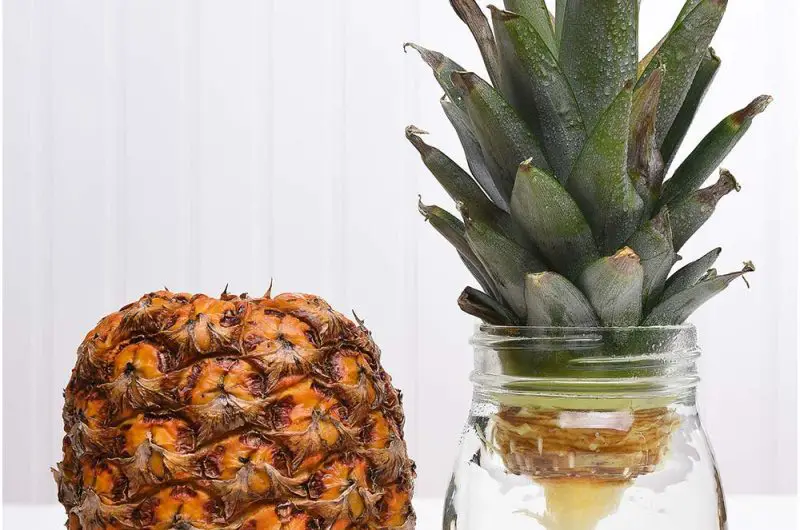
Pineapple vinegar is a tangy and versatile ingredient that can be used in a variety of recipes, from salad dressings to marinades to sauces. Making pineapple vinegar at home is surprisingly easy and requires only a few simple ingredients. In this article, we’ll walk you through the steps of making your own pineapple vinegar from scratch.
Ingredients:
- 1 ripe pineapple
- 1 cup of water
- 1/4 cup of sugar
- 1/2 cup of unpasteurized apple cider vinegar
Instructions:
- Cut the top and bottom off the pineapple, then slice off the skin. Cut the pineapple into small pieces and place them in a large glass jar.
- In a saucepan, combine the water and sugar and heat over medium heat until the sugar dissolves. Allow the mixture to cool to room temperature.
- Pour the cooled sugar water over the pineapple in the jar, making sure that the fruit is fully submerged. Cover the jar with a piece of cheesecloth and secure it with a rubber band.
- Place the jar in a cool, dark place for about a week. Stir the contents of the jar once a day.
- After a week, strain the mixture through a fine-mesh sieve, discarding the pineapple solids. Pour the strained liquid back into the jar.
- Add the unpasteurized apple cider vinegar to the jar and stir to combine.
- Cover the jar with cheesecloth again and place it back in the cool, dark place for another two to four weeks. Stir the mixture once a week.
- Taste the vinegar after two weeks to see if it has reached your desired level of tanginess. If not, allow it to ferment for another week or two.
- Once the vinegar has reached your desired level of tanginess, transfer it to a clean glass jar or bottle with a tight-fitting lid. Store the vinegar in a cool, dark place for up to six months.
Tips:
- Use a ripe pineapple for the best flavor. Look for a pineapple that is fragrant and has a slightly soft top.
- Make sure to use unpasteurized apple cider vinegar, as pasteurized vinegar will not ferment properly.
- You can use the leftover pineapple solids in smoothies, marinades, or sauces.
- Experiment with different types of fruit, such as mango or papaya, to create your own unique vinegar blends.
Pineapple vinegar can be used in a variety of ways in the kitchen and beyond. Here are a few examples:
Salad Dressings
Salad dressings are a delicious and easy way to add flavor to your salads. Pineapple vinegar can be used to create unique and flavorful dressings that are sure to impress your taste buds. Here are some ideas for using pineapple vinegar in salad dressings:
Pineapple Vinaigrette: Whisk together pineapple vinegar, olive oil, Dijon mustard, honey, and salt to make a tangy and slightly sweet dressing that pairs well with spinach or mixed greens.
Asian-Style Dressing: Combine pineapple vinegar with soy sauce, sesame oil, ginger, garlic, and honey to make a flavorful Asian-style dressing that goes well with cabbage, carrots, and edamame.
Tropical Fruit Dressing: Mix pineapple vinegar with fresh pineapple juice, lime juice, honey, and olive oil to make a sweet and fruity dressing that pairs well with tropical fruits such as mango, papaya, and kiwi.
Avocado Dressing: Blend avocado, pineapple vinegar, garlic, lime juice, and salt to make a creamy and tangy dressing that’s perfect for drizzling over a salad of mixed greens, cherry tomatoes, and diced red onion.
When making salad dressings with pineapple vinegar, it’s important to balance the sweetness and acidity of the vinegar with other ingredients such as oil, salt, and honey. Experiment with different combinations and ratios of ingredients until you find the perfect balance of flavors. And remember, homemade dressings can be adjusted to suit your taste preferences, so don’t be afraid to make modifications or substitutions as needed.
Marinades
Marinades are a mixture of ingredients that are used to flavor and tenderize meats before cooking. Pineapple vinegar can be a great addition to marinades, as its acidity can help to break down the proteins in the meat and make it more tender. Here are some ideas for using pineapple vinegar in marinades:
Pineapple Chicken Marinade: Combine pineapple vinegar with soy sauce, brown sugar, garlic, ginger, and olive oil to make a flavorful marinade for chicken. Let the chicken marinate for at least 30 minutes before grilling or baking.
Pork Tenderloin Marinade: Mix together pineapple vinegar, honey, Dijon mustard, rosemary, and salt to make a tangy and sweet marinade for pork tenderloin. Let the pork marinate for a few hours before roasting or grilling.
Fish Marinade: Combine pineapple vinegar with lime juice, cilantro, garlic, and olive oil to make a bright and flavorful marinade for fish such as tilapia or salmon. Let the fish marinate for 15-30 minutes before grilling or baking.
When using pineapple vinegar in marinades, it’s important to balance the acidity with other flavors such as sweeteners like honey or brown sugar, or savory ingredients like soy sauce or garlic. The length of time you let the meat marinate can also affect the final flavor and texture, so be sure to follow the recipe instructions for best results.
Overall, pineapple vinegar can be a delicious and unique addition to marinades, and can help to tenderize meats and add flavor. Experiment with different combinations of ingredients to create your own flavorful marinades for a variety of meats and seafood.
Pickling
Pickling is a process of preserving food by soaking it in a solution of vinegar, water, and salt. The acidity of the vinegar helps to preserve the food and also adds a tangy and slightly sweet flavor. Pineapple vinegar can be used to make pickled vegetables, fruits, and even meats. Here are some ideas for using pineapple vinegar in pickling:
Pickled Pineapple: Combine pineapple vinegar with sugar, salt, and water to make a pickling solution. Add diced pineapple and let it soak in the solution for at least 24 hours. The pickled pineapple can be served as a topping for tacos, salads, or grilled meats.
Pickled Cucumbers: Mix together pineapple vinegar, sugar, salt, and water to make a pickling solution. Add sliced cucumbers and let them soak in the solution for at least 24 hours. The pickled cucumbers can be used as a side dish or added to sandwiches and burgers.
Pickled Red Onions: Combine pineapple vinegar with sugar, salt, and water to make a pickling solution. Add thinly sliced red onions and let them soak in the solution for at least 30 minutes. The pickled onions can be used as a topping for tacos, salads, or sandwiches.
When using pineapple vinegar for pickling, it’s important to balance the sweetness and acidity of the vinegar with other ingredients such as sugar and salt. The length of time you let the food soak in the pickling solution can also affect the final flavor and texture, so be sure to follow the recipe instructions for best results.
Sauces
Sauces are a great way to add flavor and moisture to a variety of dishes. Pineapple vinegar can be used to make sweet and tangy sauces that are perfect for drizzling over grilled meats, stir-fried vegetables, or even as a dipping sauce for spring rolls. Here are some ideas for using pineapple vinegar in sauces:
Teriyaki Sauce: Mix together pineapple vinegar, soy sauce, brown sugar, garlic, and ginger to make a sweet and savory teriyaki sauce. Use it as a marinade for chicken or beef, or drizzle it over stir-fried vegetables and rice.
BBQ Sauce: Combine pineapple vinegar with ketchup, brown sugar, Worcestershire sauce, and spices to make a tangy and sweet BBQ sauce. Use it to baste grilled chicken, ribs, or pork chops.
Sweet and Sour Sauce: Mix together pineapple vinegar, sugar, ketchup, and cornstarch to make a sweet and sour sauce. Use it to dress stir-fried vegetables or as a dipping sauce for egg rolls or chicken nuggets.
Pineapple Salsa: Combine diced fresh pineapple, jalapeño, red onion, cilantro, and pineapple vinegar to make a fruity and tangy salsa. Use it as a topping for grilled fish or chicken.
When making sauces with pineapple vinegar, it’s important to balance the sweetness and acidity of the vinegar with other ingredients such as sugar, salt, and spices. The consistency of the sauce can also be adjusted by adding more or less liquid ingredients or thickening agents like cornstarch. Experiment with different combinations and ratios of ingredients until you find the perfect balance of flavors.
Cleaning
Pineapple vinegar can also be used as a natural cleaning agent. The acidity of the vinegar makes it effective in breaking down dirt, grime, and bacteria. Here are some ways to use pineapple vinegar for cleaning:
All-Purpose Cleaner:
Combine equal parts pineapple vinegar and water in a spray bottle. Use it to clean countertops, floors, and other surfaces around the house.
Glass Cleaner:
Mix together pineapple vinegar and water in a spray bottle. Use it to clean mirrors, windows, and other glass surfaces.
Bathroom Cleaner:
Combine pineapple vinegar with baking soda to make a paste. Use it to scrub sinks, toilets, and showers.
Laundry Booster:
Add 1/2 cup of pineapple vinegar to the rinse cycle of your washing machine. It can help to brighten and freshen up clothes and remove any lingering odors.
When using pineapple vinegar for cleaning, it’s important to test it on a small, inconspicuous area first to make sure it doesn’t damage the surface. As with any cleaning product, it’s also important to follow safety guidelines, such as wearing gloves and keeping the area well-ventilated.
Printable recipe

Pumpkin Butter
Made with pumpkin puree, sugar, and spices, and can be used on everything from toast and waffles to pancakes and yogurt.
Ingredients
- 1 15-ounce can pumpkin puree
- 1/2 cup packed light brown sugar
- 1/4 cup granulated sugar
- 1/4 cup maple syrup
- 1 tablespoon ground cinnamon
- 1/2 teaspoon ground nutmeg
- 1/4 teaspoon ground ginger
- 1/4 teaspoon ground allspice
- 1/4 teaspoon salt
Instructions
1. Combine all ingredients in a medium saucepan over medium heat.
2. Bring the mixture to a boil, then reduce heat to low and simmer for 30 minutes, or until the pumpkin butter has thickened and darkened slightly.
3. Remove the pumpkin butter from the heat and let it cool completely.
4. Transfer the pumpkin butter to an airtight container and store it in the refrigerator for up to two weeks.
Notes
- For a smoother pumpkin butter, puree it in a blender or food processor before cooking.
- You can adjust the amount of sugar and spices in the recipe to your liking.
- For a fun twist, try adding other spices to the pumpkin butter, such as pumpkin pie spice, cloves, or cardamom.

More interesting articles you may be interested in reading:




